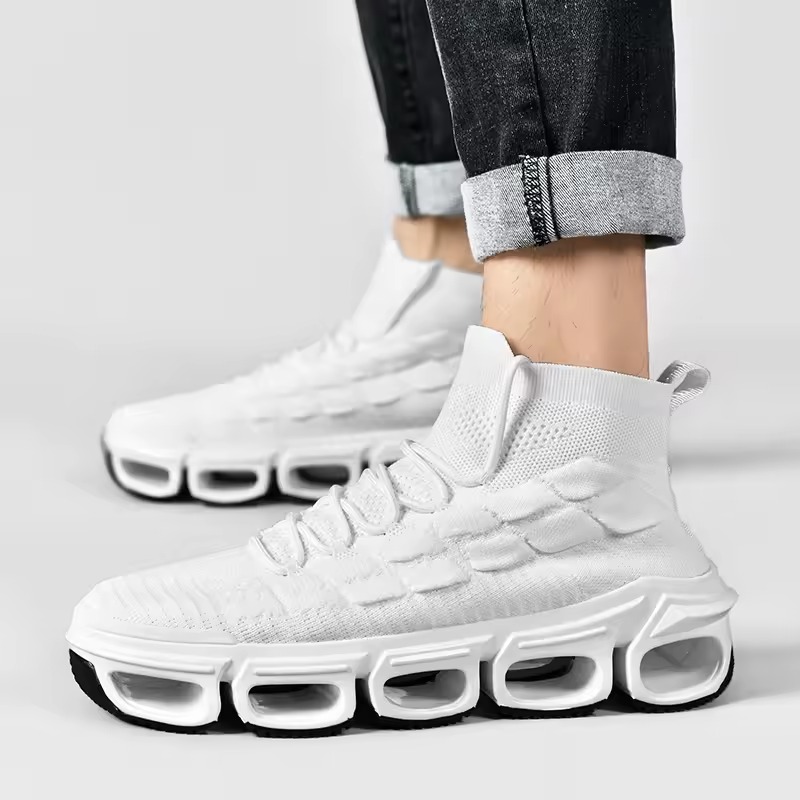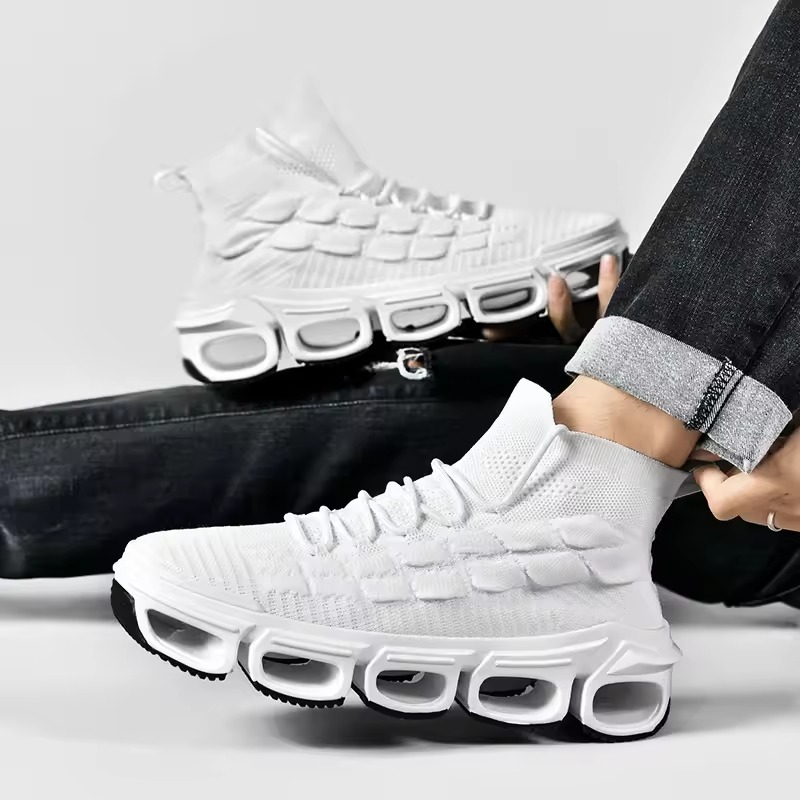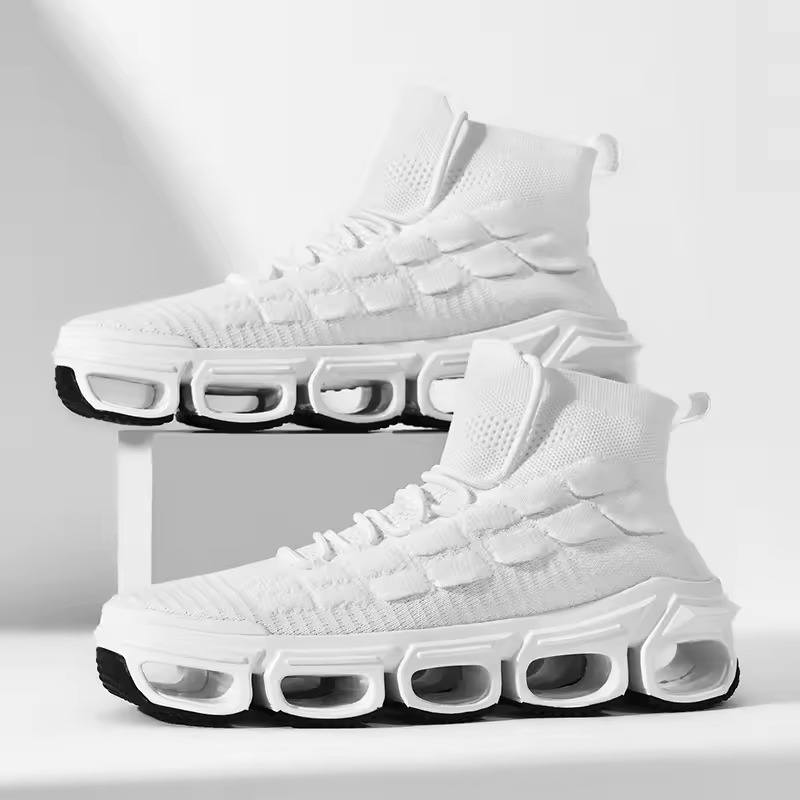Introduction
How to pick running shoes? Selecting the right running shoes is crucial for any runner, whether you’re a novice or a seasoned marathoner. The right pair can enhance your comfort, prevent injuries, and improve your overall performance. With so many brands, styles, and features to consider, choosing the right running shoes can feel overwhelming. This article will break down the process into manageable steps, helping you pick the best shoes for your unique needs.
Understanding Your Foot Type
The Importance of Knowing Your Foot Type
Before you choose running shoes, it’s essential to understand your foot type. Every foot is unique, and your foot shape can significantly influence the type of shoe that will work best for you. Knowing your foot type will help you identify the right shoes that provide adequate support and prevent injuries.
Categories of Foot Types
There are generally three main foot types: neutral, overpronated, and underpronated.
- Neutral Feet: Neutral runners have symmetrical arches. When you look at the wet footprint test, you will see a moderate curve along the inner side. Neutral runners can wear a variety of shoes without worrying too much about special features.
- Overpronated Feet: Overpronators have flat feet and experience excessive inward rolling of the foot while running. Their wet footprints often show more than half of the foot’s outline. Stability shoes that provide arch support and motion control are better suited for them.
- Underpronated Feet: Underpronators have high arches, which means their feet don’t roll inward enough. The wet footprints will display little to no curve. Runners with this foot type should look for shoes with extra cushioning to help absorb shock and provide comfort.
Assessing Your Foot Type
The wet foot test is an easy way to identify your foot type. To do the test, wet your foot and step onto a piece of cardboard or a sturdy piece of paper. Examine the shape left behind to determine your foot type.
Visit a Specialty Running Store
Another good option is to visit a specialty running store. These stores often have staff trained to analyze your gait and foot type. They may also have a treadmill and a camera to capture your running style. This process helps identify what features your shoes need to better support your foot.

Identifying Your Running Style
Understanding Different Running Styles
After determining your foot type, the next step is to evaluate your running style. This involves considering how you run and any previous injuries you may have had.
Stride Analysis
Your running stride can greatly affect which shoes are best for you. A few common running styles include:
- Heel Strikers: These runners land on their heels first. This is common among many runners, regardless of foot type. Heel strikers often benefit from additional cushioning to absorb the shock of landing.
- Midfoot Strikers: These runners land on the middle portion of their feet. They generally have a more efficient running style and may need a neutral shoe or lightweight option to complement their running.
- Forefoot Strikers: These runners land on the front part of their feet. This style often requires shoes that provide less cushioning in the heel and more flexibility.
Evaluating Past Injuries
Certain running styles can lead to injuries. If you’ve experienced issues like plantar fasciitis, shin splints, or knee pain, these may be signs that your current shoes are not meeting your needs. Proper footwear can help correct these issues and improve your overall running experience.
Determining Your Running Terrain
Indoor vs. Outdoor Running
The terrain you run on also impacts your shoe choice. Different shoes are designed for both indoor and outdoor surfaces. Knowing where you spend most of your running time will help you make the best selection.
Road Running Shoes
If you primarily run on paved roads, look for road running shoes. These shoes are lightweight and designed for smooth surfaces. They often have a more cushioned sole, which helps absorb the impact when running on hard surfaces.
Trail Running Shoes
For those who enjoy running on dirt trails or uneven terrain, opt for trail running shoes. These shoes typically feature rugged outsoles with deeper lugs for better traction. They protect your feet from rocks, roots, and other obstacles found in nature. Trail shoes are built to handle the challenges of varied surfaces.
Treadmill Running
If you predominantly run on treadmills, your shoe choices may be more flexible. Most running shoes perform well on treadmills. However, you may still want to consider comfort and breathability, as indoor running can lead to overheating if the shoe does not allow proper airflow.
Cushioning and Support Features
Understanding Shoe Cushioning
Cushioning is a critical feature to consider when picking running shoes. The level of cushioning you choose depends on your foot type, running style, and personal comfort preference.
Types of Cushioning
- Minimalist Shoes: These shoes provide very little cushioning and support. They are best for experienced runners who seek to strengthen their feet and improve their form. However, they may expose less experienced runners to more risk of injury.
- Moderate Cushioning: This type of cushioning offers a good balance between comfort and responsiveness. It provides enough protection for daily runners without sacrificing the ground feedback that some runners prefer.
- High Cushioning: These shoes offer maximum cushioning, great for runners who prioritize comfort or those recovering from injuries. Brands like HOKA One One are well-known for their plushness and maximalist cushioning.
Finding the Right Level of Support
In addition to cushioning, support is another essential aspect to consider. Support usually refers to the shoe’s ability to stabilize your foot during your run. Runners who overpronate often need shoes with stability features. These shoes help prevent excessive inward rolling of the foot.
Features of Supportive Running Shoes
Look for shoes that offer the following features:
- Arch Support: Shoes designed with built-in arch support can help prevent discomfort for those with flat feet or high arches.
- Heel Counter: A firm heel counter provides additional stability and helps maintain proper alignment.
- Midsole Materials: Some shoes use foam or gel in the midsole, providing extra cushioning and support.
Trying on Running Shoes
The Importance of a Proper Fitting
Once you have a clear understanding of your foot type, running style, terrain, and desired features, it’s time to try on shoes. A proper fitting is crucial for finding the right pair.
Time of Day Matters
Be aware that your foot size can change throughout the day. It’s best to go shopping in the afternoon or evening when your feet are more likely to be swollen. This will help ensure a comfortable fit.
Wear Your Running Socks
Always wear the socks you plan to use when running. This will give you a more accurate feel for how the shoe fits. Make sure the socks are thin or thick depending on your preferences, as this can affect comfort.
Walk and Jog in Your Shoes
When trying on running shoes, walk and jog around the store to assess comfort. Some stores have treadmills or allow you to run around in the fitting area. Pay attention to how the shoes feel with every step.
Check for Space
Ensure there’s enough space in the toe box. Wiggle your toes comfortably, and make sure they don’t touch the front of the shoe. Ideally, there should be about a thumb’s width of space between your longest toe and the shoe’s front.

Investing in Quality Running Shoes
The Price Factor
Quality running shoes may come with a higher price tag, but they are worth the investment. Cheaper shoes often lack adequate support, cushioning, and durability, which can lead to injuries and discomfort in the long run.
Long-Term Benefits
Investing in a quality pair of running shoes can save you money over time. They will last longer and perform better, allowing you to enjoy your runs without worrying about shoe-related issues.
Check Return Policies
While selecting running shoes, check the store’s return policy. Many specialty running stores offer a return policy that allows you to test the shoes during your runs. If they don’t meet your needs, you can return them and try another pair.
Maintaining Your Running Shoes
Proper Care for Longevity
Once you’ve found the right pair of running shoes, it’s important to maintain them properly to extend their lifespan. Following a few simple care tips can help keep your shoes in optimal condition.
Cleaning After Runs
After each run, take a few moments to clean your shoes. Remove dirt and mud with a towel or a soft brush. Avoid putting them in the washing machine, as this can harm the materials.
Let Them Breathe
When you finish a run, do not store your shoes in a closed bag. Let them air out to avoid odors and potential mold growth. Dry them at room temperature, away from direct sunlight or heat sources.
Replacing Your Running Shoes
Recognizing When to Replace
Understanding when to replace your running shoes is as important as choosing the right pair. Generally, running shoes should be replaced every 300 to 500 miles.
Listen to Your Body
If you start to feel discomfort or pain during your runs, it could be a sign that your shoes are worn out. Keeping track of your mileage in a running log can help you know when to buy a new pair.
Donating Old Shoes
Once you’re ready to replace your shoes, consider donating your old running shoes if they’re still in usable condition. Many charities and organizations accept gently used athletic shoes and distribute them to those in need.
Conclusion: Your Journey to Finding the Perfect Running Shoes
In conclusion, selecting the right running shoes is a multi-faceted process that involves understanding your foot type, assessing your running style, and evaluating the terrain you’ll be running on. Different cushioning levels and support features can aid in achieving optimal comfort and performance.
Taking Action
Once you have determined your preferences and needs, try on various models, and don’t hesitate to invest in high-quality options that suit your requirements. Proper maintenance of your shoes and recognizing when to replace them will contribute to a better running experience.
Embracing Your Unique Journey
Remember, every runner is different. What works for someone else may not be the best choice for you. Take the time to educate yourself, and enjoy the journey of finding the perfect running shoes that keep you comfortable and motivated along your path to health and happiness. Happy running!
